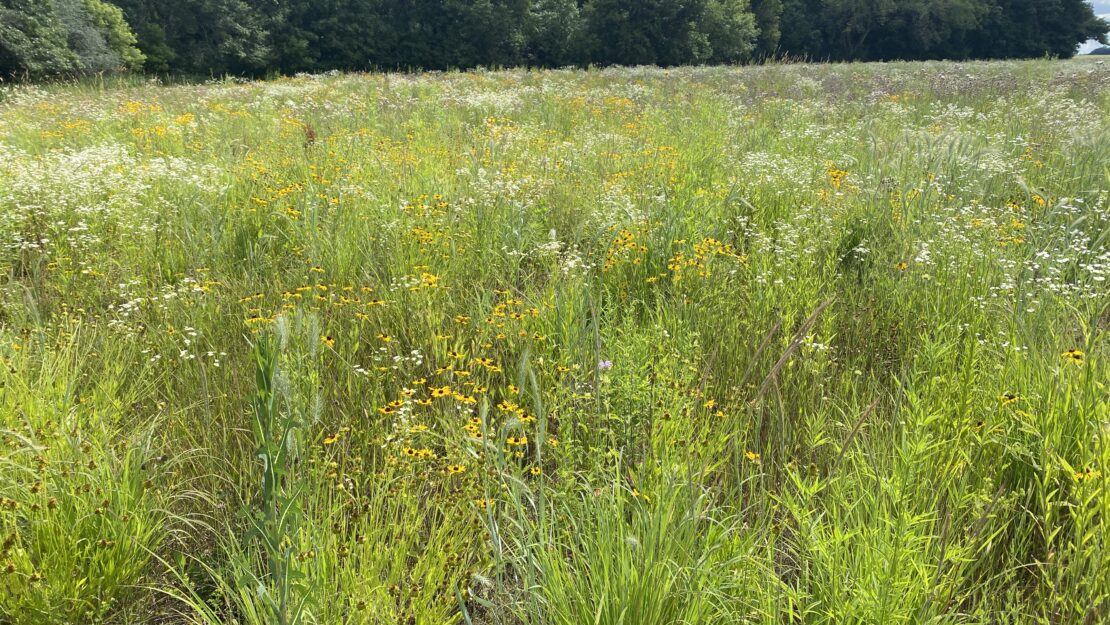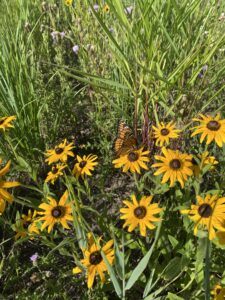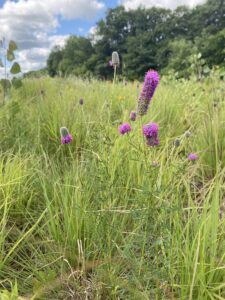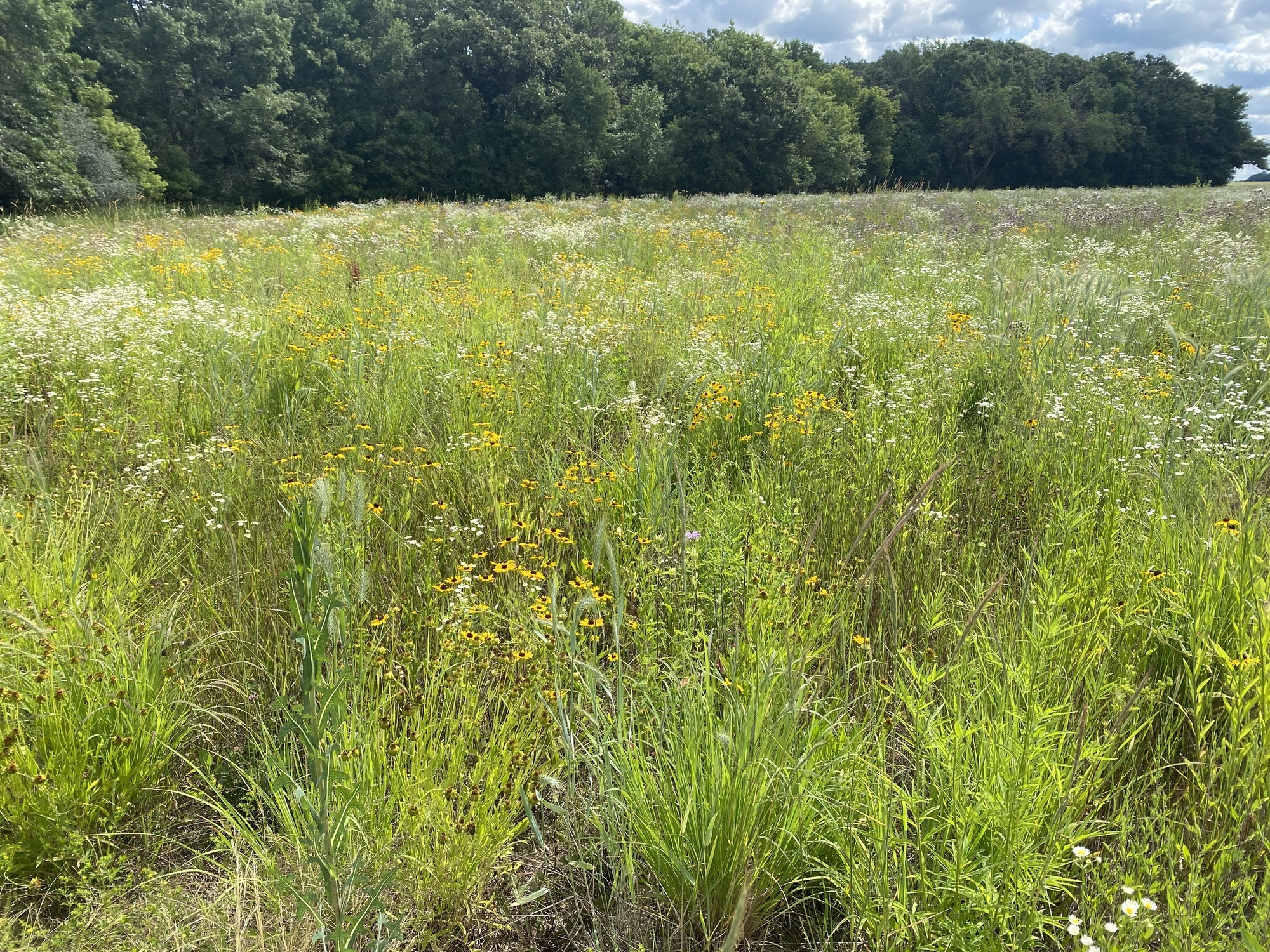Pollinator Palooza

By Mia Makovsky, Clean Water Corpsmember / AmeriCorps Member placed with Dodge Soil and Water Conservation District

Laura is tasked with monitoring land enrolled in the Conservation Reserve Program (CRP) across Dodge, as well as neighboring counties. She was generous enough to take me along to see one of the most beautifully conserved pieces of private land I’ve ever seen.
CRP is a program through the USDA that encourages landowners to take their less productive, environmentally sensitive land out of production and establish long-term ground cover. The environmental benefits of this program are conserving and improving soil, protecting water quality, and providing wildlife with habitat.
While the environmental benefits are extremely rewarding, CRP also compensates the landowners monetarily. Participants receive cost-share assistance as well as rental and incentive payments.
The CRP site Laura and I visited had a native upland seed mix and a native wetland seed mix for the differing conditions of soil and hydrology throughout the property. The land was planted with these mixes two years ago, allowing this summer to be the first sight of the true establishment of these plants.
Laura and I left the office shortly after 7 am to make our way to the property. Following the drive through corn and bean fields for miles, watching the restored native plants slowly appear was a site for sore eyes!
As we walked through 300 acres of pristine native upland prairie and wetland, we discovered the property had an abundance of diversity. Many native forbs, grasses, and insects have made this site their home.

- Compass plant
- Big bluestem
- Purple Prairie Clover
- Wild bergamot
- Yarrow
- Leadplant
- Canada Wild Rye
- Spotted Bee Balm
- Hoary Vervain
Not only are these plants important for soil health, but most support pollinators! The lack of native flowers and forbs has been a major factor to the decline in pollinator populations. By converting the use of this area from cropland to upland prairie and wetlands, the landowner is providing a habitat for our pollinating friends.

Why should farmers care about creating pollinator habitats? Honeybees, butterflies, moths, beetles, flies, and yes, even wasps pollinate 80% of plants on Earth. Within this percentage lies over one third of the food and crops we consume as humans. In North America alone, honeybees are responsible for aiding in the production of 90% of commercial crops grown. Pollinators are directly linked to food security on our planet!
As Laura and I were leaving the property, we felt hopeful for the future of the pollinators. With the increase in education, research, and implementation of conservation practices, we anticipated to witness more land set aside for pollinators to find refuge in.
As my last month in Dodge County approaches, I am thankful for the experiences I am having and the knowledge I am gaining. I am eager to wrap up some conservation projects and finish out the summer strong!
